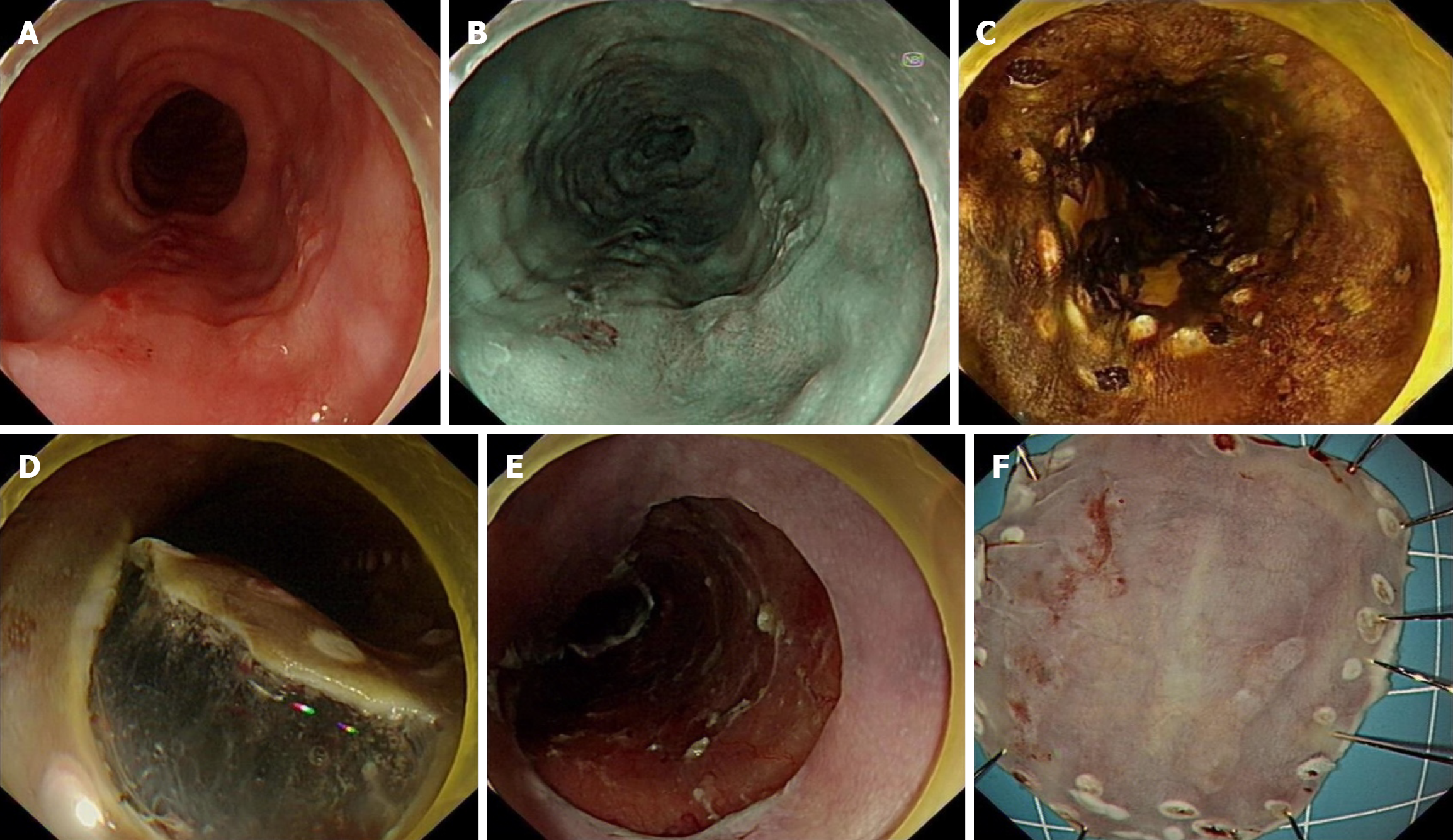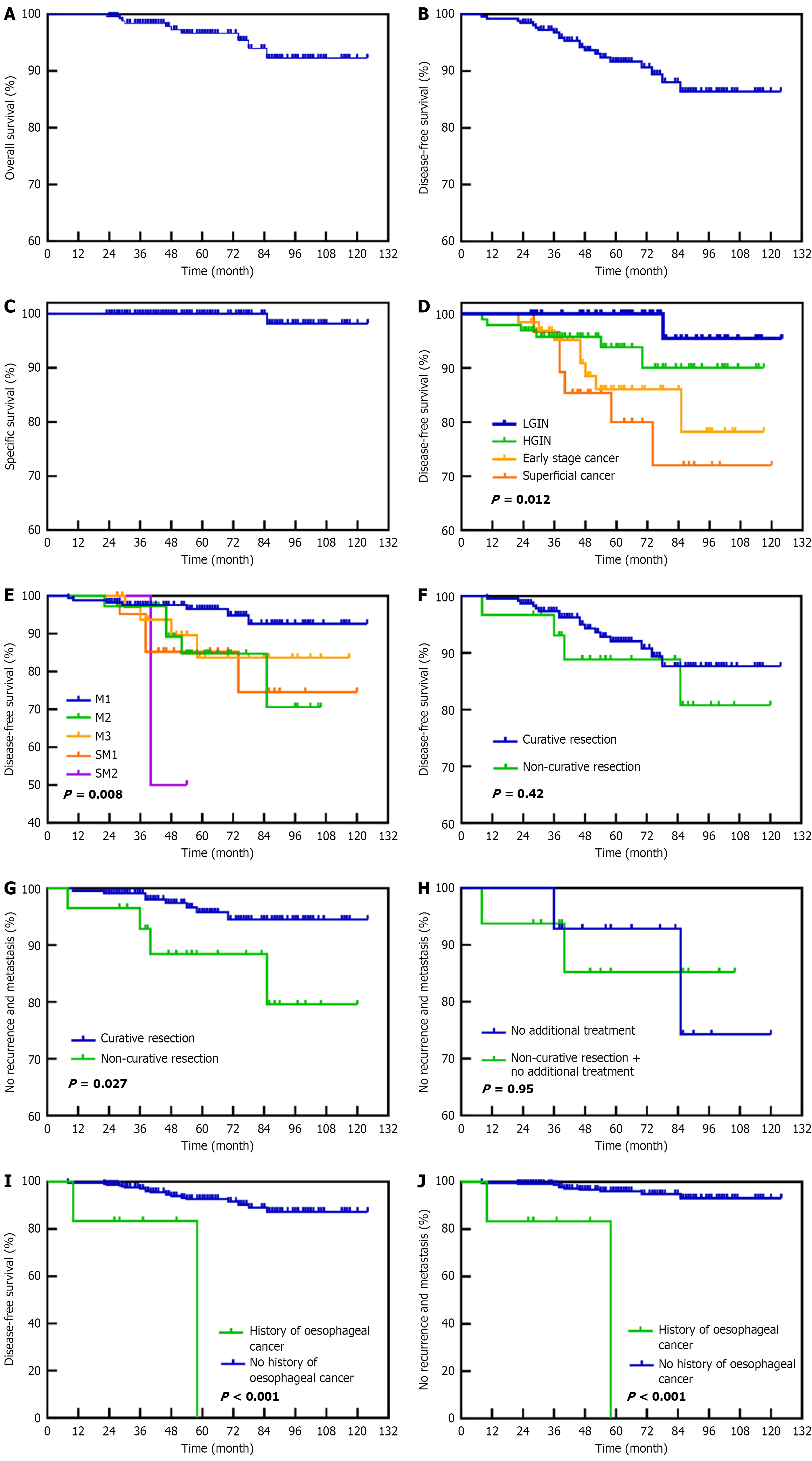Copyright
©The Author(s) 2025.
World J Gastroenterol. Oct 14, 2025; 31(38): 110557
Published online Oct 14, 2025. doi: 10.3748/wjg.v31.i38.110557
Published online Oct 14, 2025. doi: 10.3748/wjg.v31.i38.110557
Figure 1 Endoscopic submucosal dissection of an early esophageal squamous cell carcinoma.
A: White light endoscopy to describe lesion; B: Virtual pigment description of the lesion; C: Pericyclic marker lesion; D: Submucosal dissection; E: Post-endoscopic resection of ulcer; F: Fixed specimen.
Figure 2 Kaplan-Meier curves show overall survival, disease-free survival, and disease-specific survival during follow-up.
A: Overall survival; B: Disease-free survival (DFS); C: Disease-specific survival; D: Differentiation-based DFS; E: DFS based on depth of invasion; F: DFS based on curative resection; G: Recurrence-metastasis-free survival (RMFS) based on curative resection; H: RMFS based on noncurative resection combined with adjuvant therapy; I: DFS based on prior esophageal cancer; J: RMFS based on the prior esophageal cancer. LGIN: Low-grade intraepithelial neoplasia; HGIN: High-grade intraepithelial neoplasia.
- Citation: Zhang YM, Zhu N, Chen MY, Li FL, Qin B, Jiang J, Wang SH, Wu J, Quan XJ, Wang CY, Zheng Y, Zou BC. Clinical features of early esophageal neoplastic lesions at different stages and efficacy and prognosis after endoscopic submucosal dissection. World J Gastroenterol 2025; 31(38): 110557
- URL: https://www.wjgnet.com/1007-9327/full/v31/i38/110557.htm
- DOI: https://dx.doi.org/10.3748/wjg.v31.i38.110557














